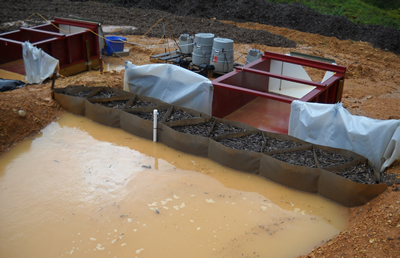Geosynthetica’s Elizabeth Peggs had a chance to interview Brian H. Whitaker, P.E., CPESC of Fiberweb during the International Erosion Control Association’s (IECA) 2013 Region One conference and exhibition (Environmental Connection). He discusses turbidity removal designs, check dams, geocell utilization, and other stormwater and sediment control issues.
Fiberweb was part of turbidity control tests, one of which was a multi-year study, one of which lasted a year. They worked with outside parties on these sites–Dr. Kevin Wolfe (Vice President of Civil & Environmental Consultants in Franklin, TN) and the Tennessee Department of Transportation (TDOT)–and the result is comparative performance on different types of turbidity management solutions: geocells, straw wattles, and “enhanced” check dams. The wattles and check dams have been the more commonly solutions but have experienced a frequent number of problems.
Key quote:
“We also found that the enhanced check dam worked much better than we expected….The enhanced check dam was built exactly to the specification the Tennessee Department of Transportation provided for us; but what we found on most job sites, they were not built to those specifications…. Even though the enhanced check dam performed better than we expected, it still did not perform as well as the geocell system.”
The research provides a good case for rethinking how turbidity is controlled in transportation projects, general construction, at landfills, and elsewhere.

Additional documentation on geocells from Fiberweb’s Typar Geosynthetics team can be found at www.typargeosynthetics.com.
NOTE: IECA’s Environmental Connection 2014 will be held in Nashville, Tennessee 25-28 February 2014.











